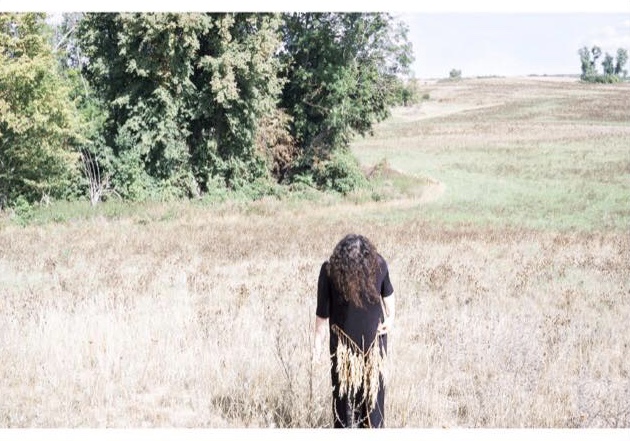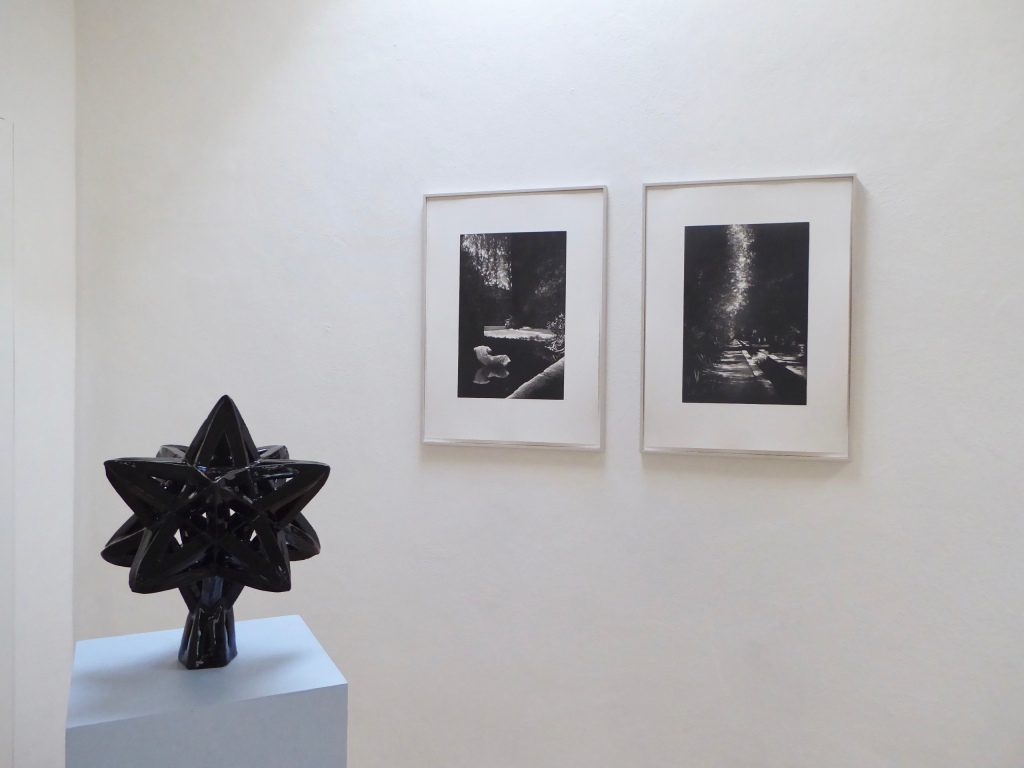Janna Jirkova
25.11 – 30.12.2022
Lothringer 13 Studio, Lothringer Str. 13, 81667 München







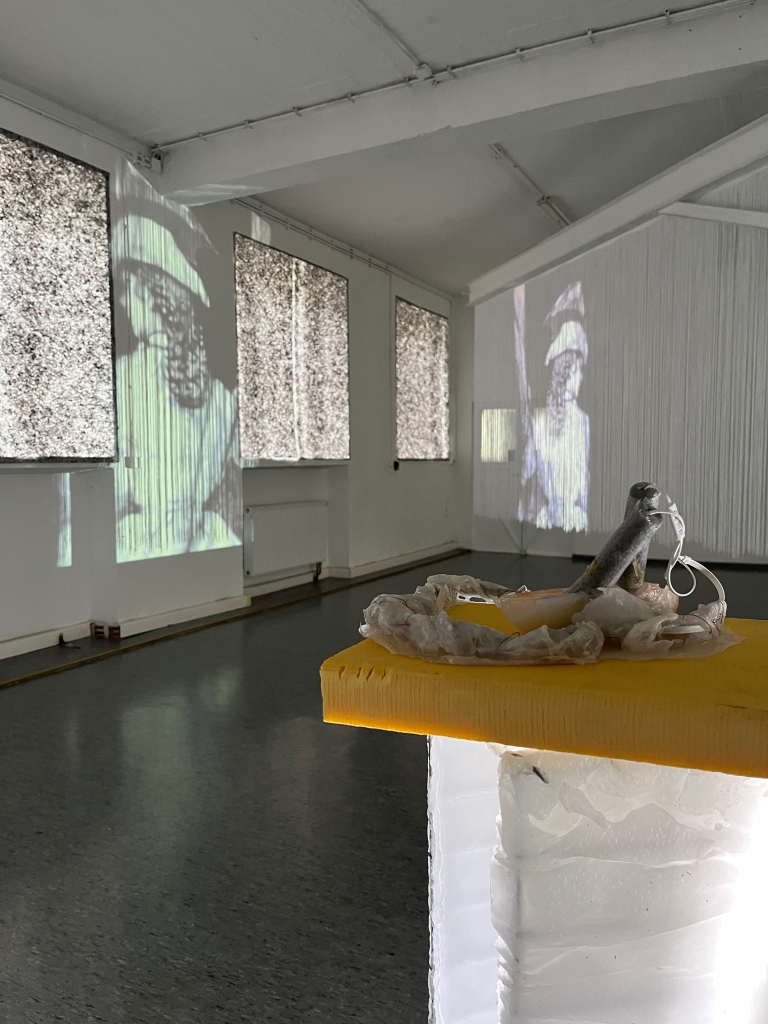






I have long, straight hair, slightly dry at the ends, too seldom cut. When I read or write, I tuck the loose strands behind my ear. It is always present, over there, too much to count yet infinitely countable. Oddly, I think of hair when I read Brian Massumi’s definition of the virtual (“Envisioning the Virtual” in The Oxford handbook of Virtuality, 55-70), and not only because of his arguments about value (because you are worth it!). For he opposes the virtual to the actual, rather than the natural or the real, and explains through Whitehead’s opposition of the sensuous and non-sensuous. Hair is sensuous because it exists over there, ready to be counted. There is a reference to space – counting unfolds in time. But hair is also virtual I guess, because it also appears to perception all at once: I do not have to pick a strand and start counting. Hair is there in one fell swoop, or rather swoosh. I already have a rough idea of a number – through habit, previous knowledge and earlier, other experiences. But as soon as I try to locate and fix this dimension – to grasp it in my hand – this virtual aspect disappears into the actual. Massumi describes the non-sensuous as having “a strangely compelling, shimmering sterility” (60) and this makes me think of the hair in this exhibition, Electric bodies shooting through space, silky white curtains on which the video work, Her do, shimmers.
In her work, Janna Jirkova plays with the natural and the artificial. Natural are our bodies: nails, mouth, belly, hair; artificial is the technology, both high and low tech, she attaches to her body in cyborg-like fashion. The electric bodies shooting through space are us, joggers wearing headlights in the dark, Major Tom floating in a tin can. But it is not that technology functions as some sort of extension of our body and its capacities, rather, Jirkova shows how our bodies are already artificial (and by extension, the artificial is already also natural). “Self-prosthetic” is Massumi’s term (64).
The English labels Jirkova reads out in her video, “pretty package… high performance …. the type I like” – but also negatively, “broken … malfunctioning” – are ways to describe both: the human body and technology, the natural and the artificial tangled together in language. On the shimmering screen, we see purple hair being used to tickle a belly, except that the hair is another video projection and the belly, a plaster cast. Again, she touches her navel, but this is on a mobile phone screen, forward facing, in a pouch of a rubber apron, worn over a white protective suit. “Samson, Samson, show me your hair!” Her hair, the hair of the empress Elisabeth. There is body hair shown as a video of a fern unfurling, and the abstract red and pinks are made by placing fingers over the recording device. Jirkova sets out to produce a field of tensions between different modes of existence, actual and virtual. These are tensions that come with the contrast between the sensuous and the non-sensuous. As Massumi argues, modes do not add up to anything – they do not form anything. Experience emerges when the pressure becomes unsustainable and these tensions break (62).
Through this intensive force field all of our experience is conditioned. What we bring to the conditional field phenomenon is our tendencies, in which they are a formative factor. Only these tendencies can be either natural, in the sense of a genetic predisposition or artificial, as in learnt. For Massumi, art and technology merely extend the body’s pre-existing regime of natural and acquired artifice, “already long in active duty in producing the virtual reality of our everyday lives” (64). We are caught between our tendencies in an intensive force field of emergence, indeed like “motes,” “caught up in a tumult of non-Newtonian motion” (Beckett, Murphy, Chapter 6).
Magdalena Wisniowska 2022

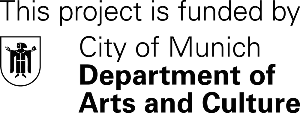




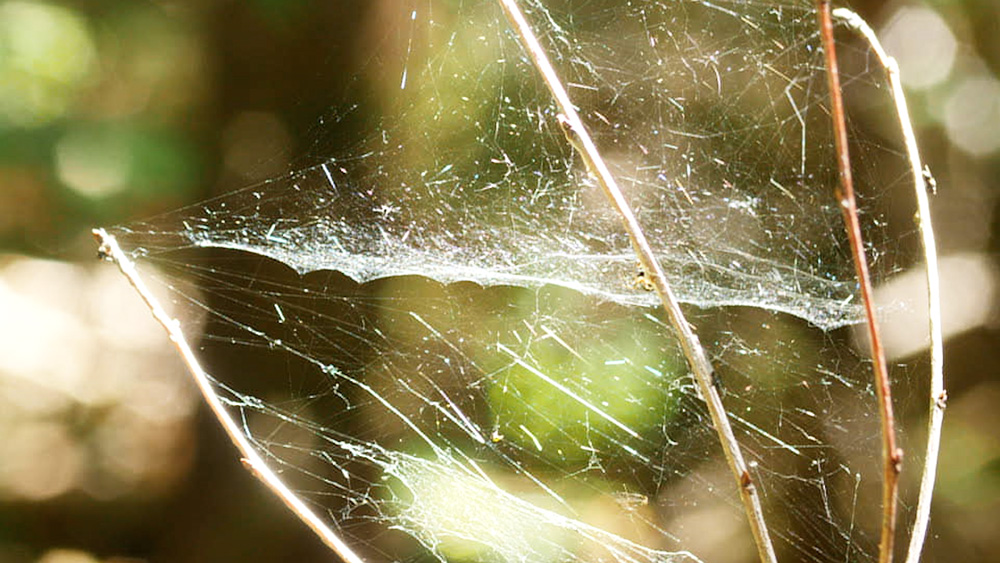









 Vier, 2019, installation view
Vier, 2019, installation view Vier, 2019, installation view
Vier, 2019, installation view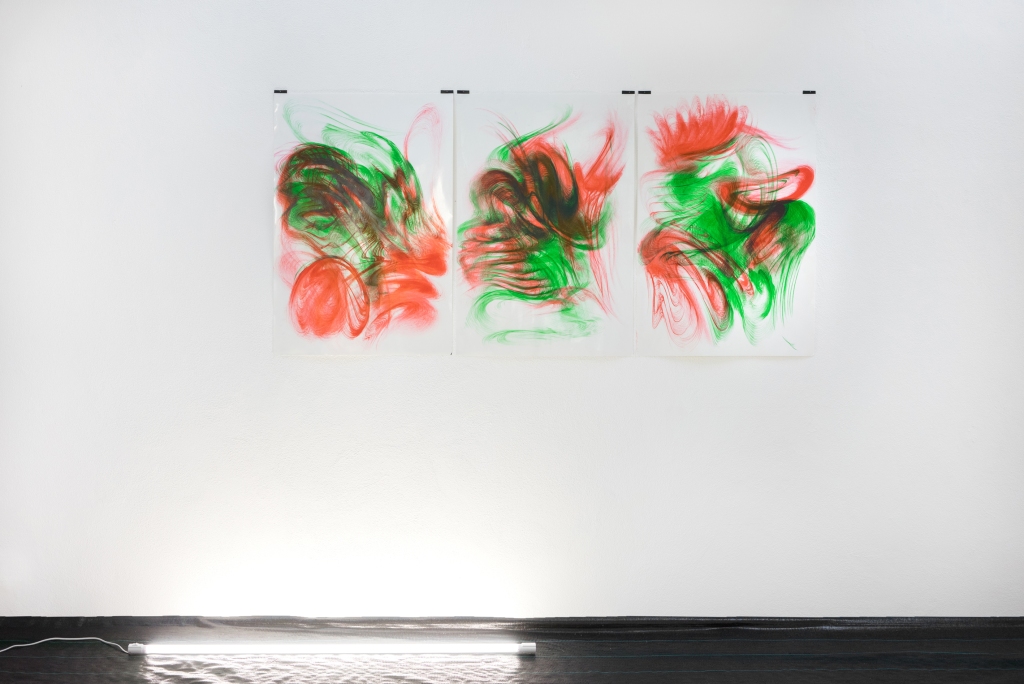 Vier, 2019, installation view
Vier, 2019, installation view Vier, 2019, installation view
Vier, 2019, installation view o. T. [ scarlet red and sap green ], 2019, Indian ink on chromolux,
o. T. [ scarlet red and sap green ], 2019, Indian ink on chromolux, Vier, 2019, installation view
Vier, 2019, installation view o. T. [ scarlet red and sap green ], 2019, Indian ink on chromolux, 70 x 100 cm
o. T. [ scarlet red and sap green ], 2019, Indian ink on chromolux, 70 x 100 cm Vier, 2019, installation view
Vier, 2019, installation view o.
o. o.
o.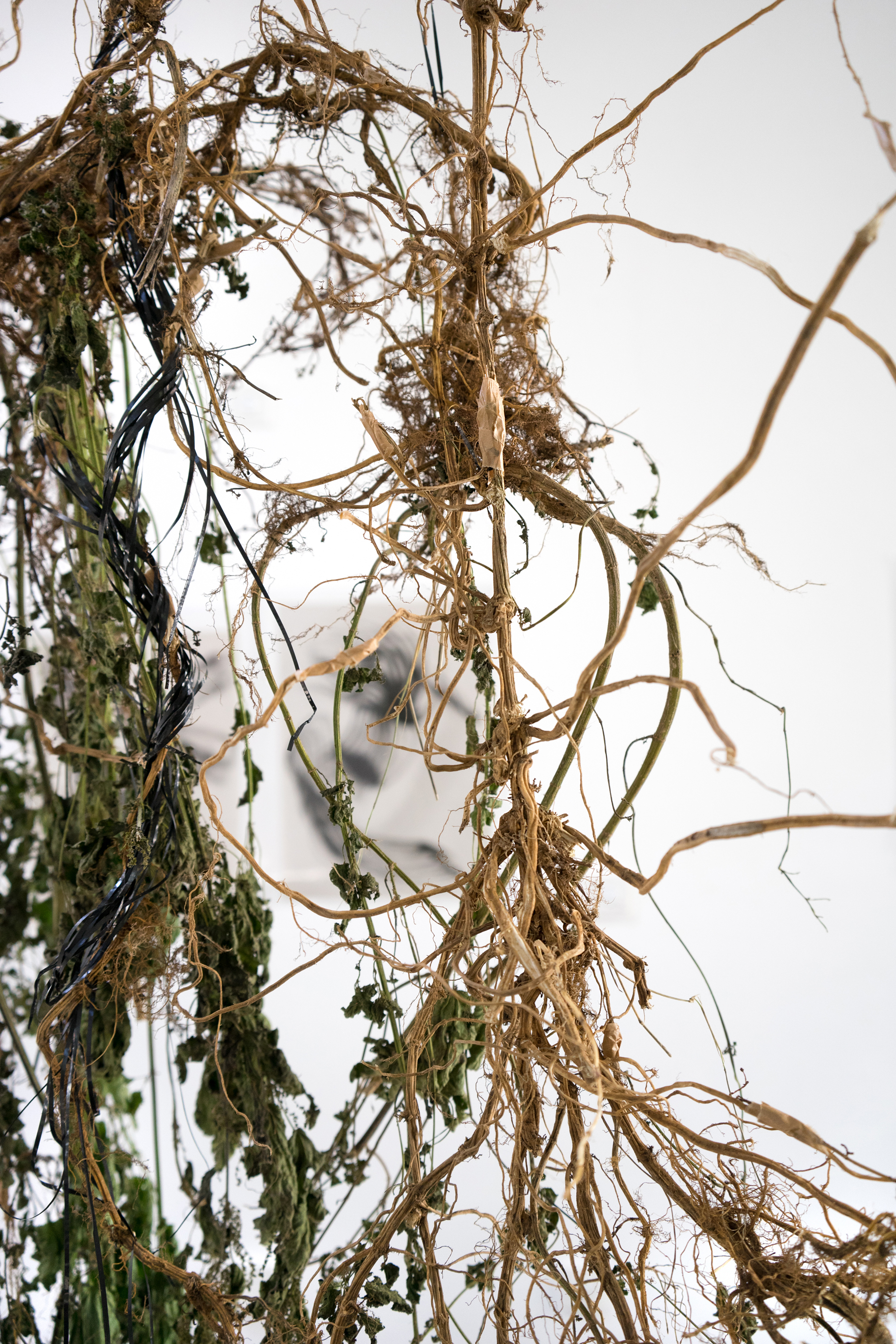
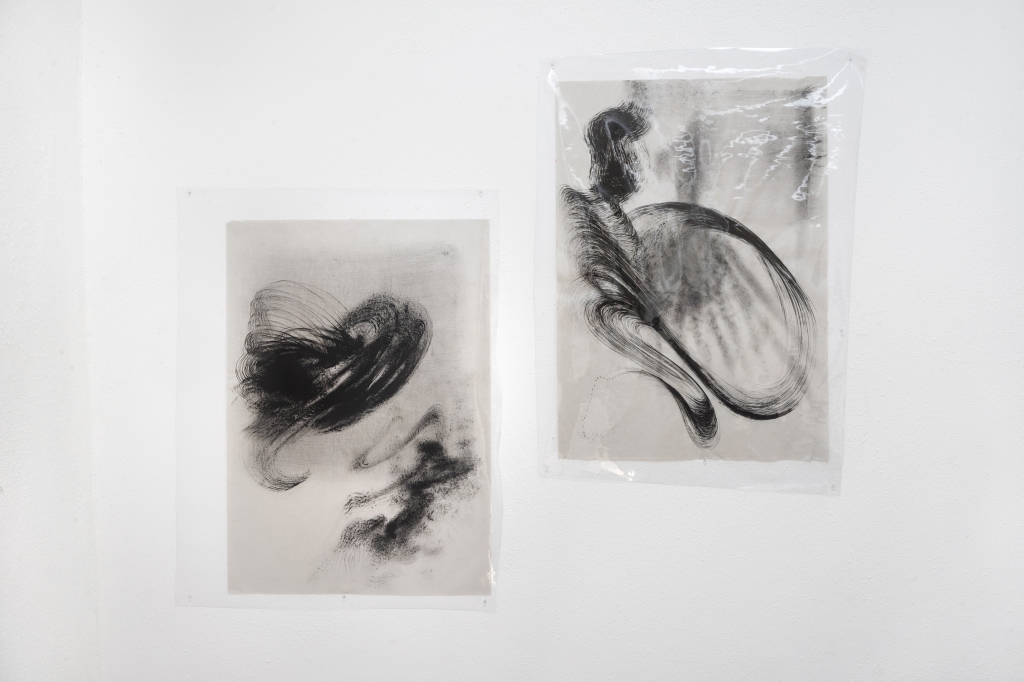 o. T. [black ], 2019, Indian ink on newsprint,
o. T. [black ], 2019, Indian ink on newsprint, o. T. [black ], 2019, Indian ink on newsprint, 42 x 60 cm
o. T. [black ], 2019, Indian ink on newsprint, 42 x 60 cm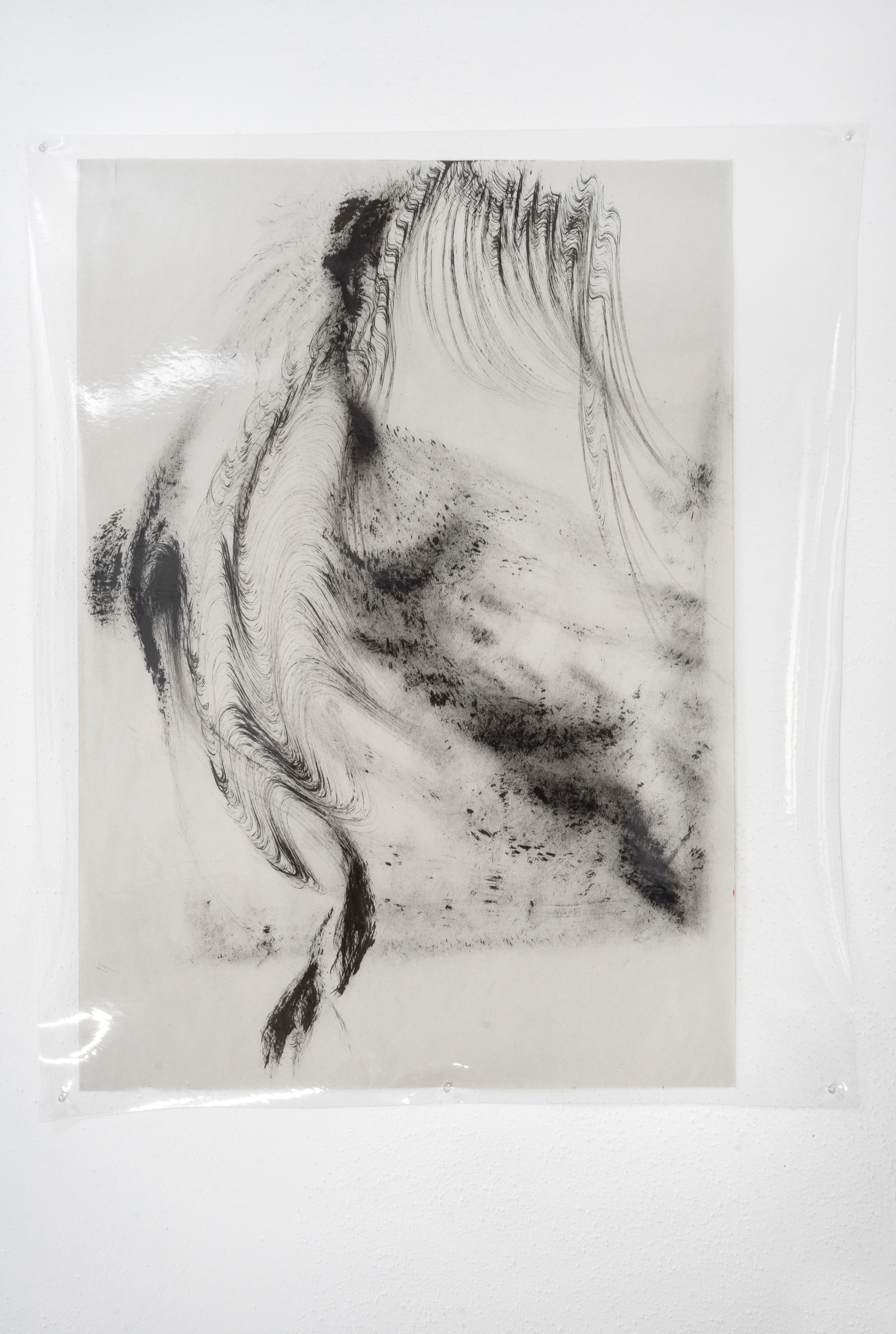 o. T. [black ], 2019, Indian ink on newsprint, 42 x 60 cm
o. T. [black ], 2019, Indian ink on newsprint, 42 x 60 cm Dear Fear, 2019, reading performance
Dear Fear, 2019, reading performance